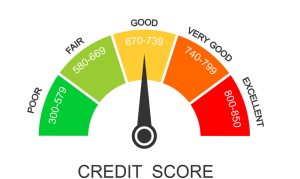New Student Loan Repayment Plan
3 min read
Introduction: In a significant development, the Biden administration has introduced a new student loan repayment plan, aiming to alleviate the burden on borrowers and pave the way for more manageable debt. This article explores the key features of the plan, its potential impact, and the broader context of student loan reform.
Addressing the Student Loan Crisis: Student loan debt in the United States has reached unprecedented levels, with millions of borrowers facing financial strain. The new repayment plan signals the administration’s commitment to addressing the student loan crisis and creating pathways for debt relief.
Key Features of the New Plan: The Biden administration’s repayment plan introduces several key features, including income-driven repayment options, loan forgiveness provisions, and measures to streamline the repayment process. These elements aim to tailor student loan payments to borrowers’ financial circumstances.
Income-Driven Repayment Options: One of the cornerstones of the new plan is expanded access to income-driven repayment options. This means that borrowers can align their monthly payments with their income, providing relief for those facing financial challenges or variable income streams.
Loan Forgiveness Provisions: The plan includes provisions for loan forgiveness, particularly for borrowers working in public service or nonprofit sectors. This move acknowledges the valuable contributions of individuals in these sectors and incentivizes public service as a viable career path for those with student loan debt.
Streamlining Repayment Processes: Simplifying the repayment process is a key focus. The new plan aims to make it easier for borrowers to understand their options, navigate the repayment landscape, and access necessary resources for managing their student loan debt effectively.
Potential Impact on Borrowers: The potential impact of the new student loan repayment plan is vast. For borrowers, it could mean reduced monthly payments, faster progress toward loan forgiveness, and increased financial flexibility to meet other essential needs.
Broader Context of Student Loan Reform: The introduction of this new plan aligns with broader conversations about student loan reform in the United States. Advocates for reform argue that addressing the root causes of ballooning student debt is crucial for the nation’s economic health and the financial well-being of its citizens.
Political and Social Implications: The student loan crisis has become a pressing political and social issue. The Biden administration’s proactive approach to tackle student debt is likely to have implications for its popularity and public perception, particularly among younger demographics burdened by student loans.
Challenges and Criticisms: While the new plan has received praise for its efforts to provide relief, it is not without challenges and criticisms. Some argue that more aggressive measures, such as widespread debt cancellation, are needed to truly address the magnitude of the student loan crisis.
Looking Ahead: The unveiling of the new student loan repayment plan marks a significant step in the ongoing journey toward comprehensive student loan reform. As the plan is implemented and its impact assessed, it sets the stage for continued discussions on how best to support borrowers and reshape the landscape of higher education financing.
Conclusion: Biden’s introduction of a new student loan repayment plan reflects a commitment to finding sustainable solutions to the student loan crisis. As the nation grapples with the economic fallout of the COVID-19 pandemic, this plan offers a ray of hope for borrowers seeking relief and sets the stage for a broader conversation about the future of student loan policy in the United States.





